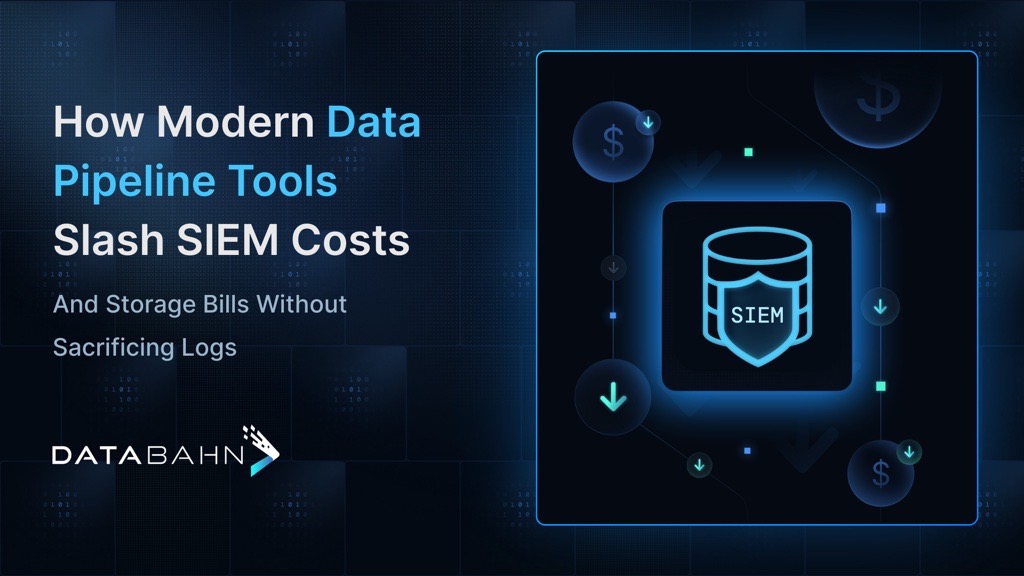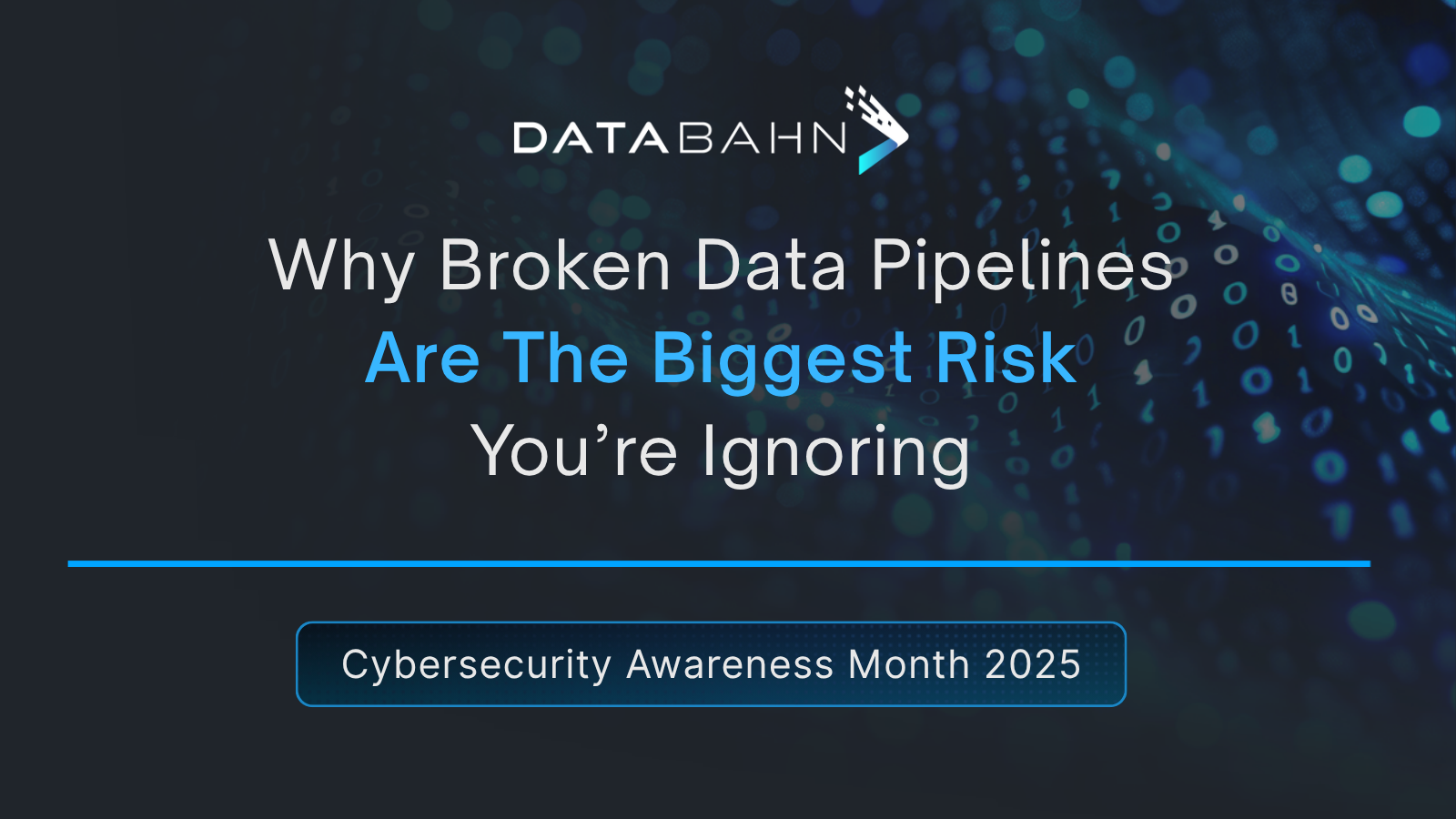The SIEM Cost Spiral Security Leaders Face
Imagine if your email provider charged you for every message sent and received, even the junk, the duplicates, and the endless promotions. That’s effectively how SIEM billing works today. Every log ingested and stored is billed at premium rates, even though only a fraction is truly security relevant. For enterprises, initial license fees might seem manageable or actually give value – but that's before rising data volumes push them into license overages, inflicting punishing cost and budget overruns on already strained SOCs.
SIEM costs can be upwards of a million dollars annually for ingesting their entire volume, leaving analysts spending nearly 30% of their time chasing low-value alerts arising out of rising data volumes. Some SOCs deal with the cost dimension by switching off noisy sources such as firewalls or EDRs/XDRs, but this leaves them vulnerable.
The tension is simple: you cannot stop collecting telemetry without creating blind spots, and you cannot keep paying for every byte without draining the security budget.
Our team, with decades of cybersecurity experience, has seen that pre-ingestion processing and tiering of data can significantly reduce volumes and save costs, while maintaining and even improving SOC security posture.
Key Drivers Behind Rising SIEM Costs
SIEM platforms have become indispensable, but their pricing and operating models haven’t kept pace with today’s data realities. Several forces combine to push costs higher year after year:
1. Exploding telemetry growth
Cloud adoption, SaaS proliferation, and IoT/endpoint sprawl have multiplied the volume of security data. Yesterday’s manageable gigabytes quickly become today’s terabytes.
2. Retention requirements
Regulations and internal policies force enterprises to keep logs for months or even years. Audit teams often require this data to stay in hot tiers, keeping storage costs high. Retrieval from archives adds another layer of expense.
3. Ingestion-based pricing
SIEM costs are still based on how much data you ingest and store. As log sources multiply across cloud, SaaS, IoT, and endpoints, every new gigabyte directly inflates the bill.
4. Low-value and noisy data
Heartbeats, debug traces, duplicates, and verbose fields consume budget without improving detections. Surveys suggest fewer than 40% of logs provide real investigative value, yet every log ingested is billed.
5. Search and rehydration costs
Investigating historical incidents often requires rehydrating archived data or scanning across large datasets. These searches are compute-intensive and can trigger additional fees, catching teams by surprise.
6. Hidden operational overhead
Beyond licensing, costs show up in infrastructure scaling, cross-cloud data movement, and wasted analyst hours chasing false positives. These indirect expenses compound the financial strain on security programs.
Why Traditional Fixes Fall Short
CISOs struggling to balance their budgets know that their SIEM costs add the most to the bill but have limited options to control it. They can tune retention policies, archive older data, or apply filters inside the SIEM. Each approach offers some relief, but none addresses the underlying problem.
Retention tuning
Shortening log retention from twelve months to six may lower license costs, but it creates other risks. Audit teams lose historical context, investigations become harder to complete, and compliance exposure grows. The savings often come at the expense of resilience.
Cold storage archiving
Moving logs out of hot tiers does reduce ingestion costs, but the trade-offs are real. When older data is needed for an investigation or audit, retrieval can be slow and often comes with additional compute or egress charges. What looked like savings up front can quickly be offset later.
Routing noisy sources away
Some teams attempt to save money by diverting particularly noisy telemetry, such as firewalls or DNS, away from the SIEM entirely. While this cuts ingestion, it also creates detection gaps. Critical events buried in that telemetry never reach the SOC, weakening security posture and increasing blind spots.
Native SIEM filters
Filtering noisy logs within the SIEM gives the impression of control, but by that stage the cost has already been incurred. Ingest-first, discard-later approaches simply mean paying premium rates for data you never use.
These measures chip away at SIEM costs but don’t solve the core issue: too much low-value, less-relevant data flows into the SIEM in the first place. Without controlling what enters the pipeline, security leaders are forced into trade-offs between cost, compliance, and visibility.
Data Pipeline Tools: The Missing Middle Layer
All the 'traditional fixes' sacrifice visibility for cost; but the real logical solution is to solve for relevance before ingestion. Not at a source level, and not static like a rule, but dynamically and in real-time. That is where a data pipeline tool comes in.
Data pipeline tools sit between log sources and destinations as an intelligent middle layer. Instead of pushing every event straight into the SIEM, data first passes through a pipeline that can filter, shape, enrich, and route it based on its value to detection, compliance, or investigation.
This model changes the economics of security data. High-value events stream into the SIEM where they drive real-time detections. Logs with lower investigative relevance are moved into low-cost storage, still available for audits or forensics. Sensitive records can be masked or enriched at ingestion to reduce compliance exposure and accelerate investigations.
In this way, data pipeline tools don’t eliminate data; it ensures each log goes to the right place at the right cost. Security leaders maintain full visibility while avoiding premium SIEM rcosts for telemetry that adds little detection value.
How Data Pipeline Tools Deliver SIEM Cost Reduction
Data pipeline tools lower SIEM costs and storage bills by aligning cost with value. Instead of paying premium rates to ingest every log, pipelines ensure each event goes to the right place at the right cost. The impact comes from a few key capabilities:
Pre-ingest filtering
Heartbeat messages, duplicate events, and verbose debug logs are removed before ingestion. Cutting noise at the edge reduces volume without losing investigative coverage.
Smart routing
High-value logs stream into the SIEM for real-time detection, while less relevant telemetry is archived in low-cost, compliant storage. Everything is retained, but only what matters consumes SIEM resources.
Enrichment at collection
Logs are enriched with context — such as user, asset, or location — before reaching the SIEM. This reduces downstream processing costs and accelerates investigations, since fewer raw events can still provide more insight.
Normalization and transformation
Standardizing logs into open schemas reduces parsing overhead, avoids vendor lock-in, and simplifies investigations across multiple tools.
Flexible retention
Critical data remains hot and searchable, while long-tail records are moved into cheaper storage tiers. Compliance is maintained without overspending.
Together, these practices make SIEM cost reduction achievable without sacrificing visibility. Every log is retained, but only the data that truly adds value consumes expensive SIEM resources.
The Business Impact of Modern Data Pipeline Tools
The financial savings from data pipeline tools are immediate, but the strategic impact is more important. Predictable budgets replace unpredictable cost spikes. Security teams regain control over where money is spent, ensuring that value rather than volume drives licensing decisions.
Operations also change. Analysts no longer burn hours triaging low-value alerts or stitching context from raw logs. With cleaner, enriched telemetry, investigations move faster, and teams can focus their energy on meaningful threats instead of noise.
Compliance obligations become easier to meet. Instead of keeping every log in costly hot tiers, organizations retain everything in the right place at the right cost — searchable when required, affordable at scale.
Perhaps most importantly, data pipeline tools create room to maneuver. By decoupling data pipelines from the SIEM itself, enterprises gain the flexibility to change vendors, add destinations, or scale to new environments without starting over. This agility becomes a competitive advantage in a market where security and data platforms evolve rapidly.
In this way, a data pipeline tool are more than a cost-saving measure. It is a foundation for operational resilience and strategic flexibility.
Future-Proofing the SOC with AI-Powered Data Pipeline Tools
Reducing SIEM costs is the immediate outcome of data pipeline tools, but its real value is in preparing security teams for the future. Telemetry will keep expanding, regulations will grow stricter, and AI will become central to detection and response. Without modern pipelines, these pressures only magnify existing challenges.
DataBahn was built with this future in mind. Its components ensure that security data isn’t just cheaper to manage, but structured, contextual, and ready for both human analysts and machine intelligence.
- Smart Edge acts as the collection layer, supporting both agent and agentless methods depending on the environment. This flexibility means enterprises can capture telemetry across cloud, on-prem, and OT systems without the sprawl of multiple collectors.
- Highway processes and routes data in motion, applying enrichment and normalization so downstream systems — SIEMs, data lakes, or storage — receive logs in the right format with the right context.
- Cruz automates data movement and transformation, tagging logs and ensuring they arrive in structured formats. For security teams, this means schema drift is managed seamlessly and AI systems receive consistent inputs without manual intervention.
- Reef, a contextual insight layer, turns telemetry into data that can be queried in natural language or analyzed by AI agents. This accelerates investigations and reduces reliance on dashboards or complex queries.
Together, these capabilities move security operations beyond cost control. They give enterprises the agility to scale, adopt AI, and stay compliant without being locked into a single tool or architecture. In this sense, a data pipeline management tool is not just about cutting SIEM costs; it’s about building an SOC that’s resilient and future-ready.
Cut SIEM Costs, Keep Visibility
For too long, security leaders have faced a frustrating paradox: cut SIEM ingestion to control costs and risk blind spots, or keep everything and pay rising bills to preserve visibility.
Data pipeline tools eliminate that trade-off by moving decisions upstream. You still collect every log, but relevance is decided before ingestion: high-value events flow into the SIEM, the rest land in low-cost, compliant stores. The same normalization and enrichment that lower licensing and storage also produce structured, contextual telemetry that speeds investigations and readies the SOC for AI-driven workflows. The outcome is simple: predictable spend, full visibility, and a pipeline built for what’s next.
The takeaway is clear: SIEM cost reduction and complete visibility are no longer at odds. With a data pipeline management tool, you can achieve both.
Ready to see how? Book a personalized demo with DataBahn and start reducing SIEM and storage costs without compromise.






.png)


.png)






.avif)

.avif)








